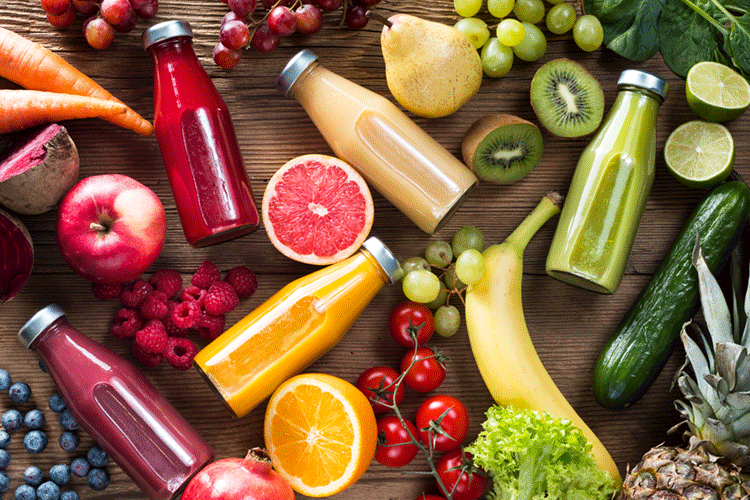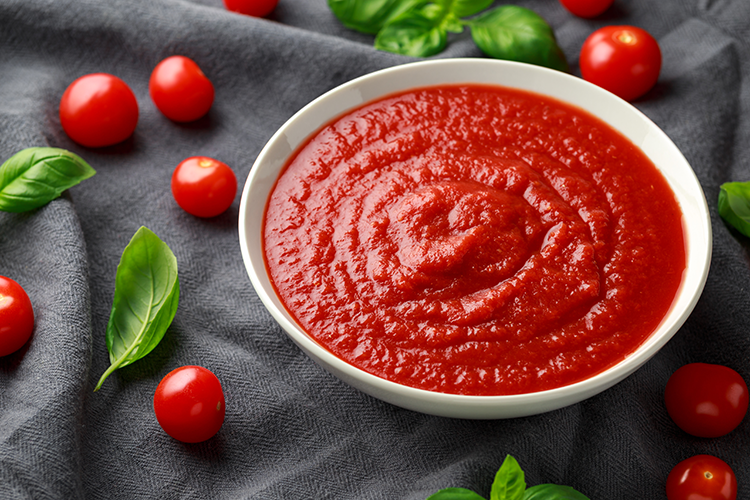6 Ways to Formulating with Citrus Fiber
Foods tend to require multiple ingredients to ensure stability and quality. Yet, the lengthy ingredient labels tend to hamper the product’s image. Fiberstar’s full line of citrus fibers offer one ingredient with multiple functionalities – water holding and emulsification. By formulating with citrus fiber, product developers can create high quality and stable food products while keeping labels clean.
Look at a food product’s label and you will be daunted at how many food ingredients are listed. Some are your classics found in grandmother’s pantry. Others struggle to roll off the tongue easily. And then some ingredients read like hieroglyphics dug up from an Egyptian crypt. Regardless, formulating with citrus fiber and/or other natural functional ingredients can help clean up food labels which improves the product’s image.
The market demands more natural ingredients that create high quality healthy food products with a long shelf-life. Using the words ‘natural ingredients’ and ‘long shelf-life’ in the same sentence is an oxymoron to most food developers. Natural ingredients tend to have limited functionality and stability which adversely affects shelf-life. Many shelf stable foods need stabilizers and/or emulsifiers to maintain its integrity. At the same time, not all fall in the clean label bucket.
Texturizers, Stabilizers and Emulsifiers
Hydrocolloids originate from various raw materials, require different handling and usage methods and provide varying functionalities. Some hydrocolloids provide stabilization, suspension and even emulsification. They exist as the workhorses in the food formulating world. However, depending on the hydrocolloid used, these ingredients pose challenges. Some have fallen out of favor with consumers due to the clean label trend. Others continue to have availability issues. However, formulating with citrus fiber has bypassed some of these hurdles.
However, not all citrus fibers are created equal. These fibers differ by raw material origin, processing methods, composition, functionality and particle size in addition to regulatory certifications. For instance, Citri-Fi® citrus fiber is produced from byproduct of the citrus juicing industry. This upcycled product uses processes free from chemical modifications. Because of the patented process, the citrus fiber exists in its natural form like Mother Nature intended. The composition of insoluble and soluble fiber, in the form of high levels of intact pectin, contribute to its functional benefits – water holding and emulsification. Moreover, the small protein content also aids in the emulsification mechanism making citrus fiber an ideal natural emulsifier.
As mentioned, citrus fibers also differ by particle size. Fiberstar offers varying particles sizes that range from fine to large coarse granules. The procurement and process allows Citri-Fi to be allergen-free, non-GMO and in some product lines, USDA certified organic.
Because Citri-Fi has a portfolio of products, how does one choose the right citrus fiber? Let’s discuss the basics.
Formulating with Citrus Fiber 100 Series
The Citri-Fi 100 product line, the flagship brand, provides water holding and emulsification properties. It is recommended to use less than 1% to minimize any flavor impact. Depending on the flavor sensitivity of the food application, Citri-Fi 100 series can be used at a slightly higher level to maximize the functional benefits.
Food applications include baked goods, dairy, beverages, processed meats, dressings, sauces, pet food, meat substitutes and dairy alternatives. Using homogenization opens the fiber up to create high surface area which increases the functionality of the citrus fiber. This can be useful in food applications such as dairy products, ice cream, dressings and sauces. For example, the sheared citrus fiber can serve as a tomato extender in tomato paste which is used in pizza sauce and tomato juice. There are four particle sizes available ranging from small to large.
Co-processed Citrus Fiber and Food Gums: Citri-Fi 200 and 300 Series
Fiberstar also offers the Citri-Fi 200 and Citri-Fi 300 series. Both of these series are co-processed with food gums, guar gum and xanthan gum, respectively. The co-processed citrus fibers provide similar water holding and emulsification as the 100 line, however, they provide additional viscosity. Both are ideal for applications requiring additional viscosity and/or functionality such as dairy products, dressings, sauces and egg and/or oil replacement in baked goods. Deciding which line to use depends on the formulation criteria. Some product developers prefer working with guar gum vs. xanthan gum or vice versa due to functionality, labeling or availability. Again, these lines are offered in various particle sizes to target specific food textures.
The Next Level of Functionality Citrus Fiber: Citri-Fi 600 Series
Now the portfolio includes the new Citri-Fi 600 citrus fiber series. Though Fiberstar offers the 200 and 300 lines to provide additional viscosity, some customers prefer not to use foods gums on their ingredient labels. And in some cases, using shear to open the fiber up to increase the viscosity is not an option. However, they still need the additional thickness. This neutral flavored Citri-Fi 600 line provides the additional viscosity without requiring shear. The viscous nature is found naturally which makes it ideal for those food manufacturers who do not have shearing equipment like a homogenizer.
Citri-Fi 600 performs well in food products such as dairy, dressings, beverages and sauces. For instance, the 600 line is also an ideal tomato paste extender. As a result, this citrus fiber can extend up to 25% tomato paste while creating a natural tomato-like texture. And due to the water and oil binding, Citri-Fi controls separation during food processing and shelf life. Citri-Fi 600 is heat, low pH and freeze/thaw stable.
USDA Certified Organic Citrus Fiber: Citri-Fi 400 Series
Due to the growing demand for more organic foods and beverages, formulating with citrus fiber that is organic is now an option. Fiberstar launched Citri-Fi 400 USDA certified organic citrus fiber. This neutral flavored organic line has the same functionality as the Citri-Fi 600 series – water holding, emulsification and added viscosity. Product developers can use the 400 series to create foods that are 100% organic, 95% organic or made with organic ingredients.
Plant-based Food Texturizers: Citri-Fi TX
The Citri-Fi TX texturizing citrus fiber was specifically designed to create meat-like texture in meat substitutes and processed meats. In plant-based meats, formulators typically use texturized plant proteins as the base to produce the meat-like texture. When formulating with citrus fiber, Citri-Fi TX enhances the texture of the meat substitute by delivering the firmness, bite and meaty texture at 2-4%. The TX is used in combination with plant-based proteins. And when combined with the 100 line, this citrus fiber binds the water and oil to produce the juiciness and succulence.
Checking all the Good Boxes
Labeling options for the Citri-Fi 100, 400, 600 and TX include citrus fiber, dried citrus pulp or citrus flour which resonate well in the natural markets. These lines are non-GMO, allergen-free and gluten-free and contribute dietary fiber. Also, they have no e-number which is desirable in regions like Europe. As mentioned, the Citri-Fi 400 is USDA certified organic. And because Citri-Fi originates from byproduct of the citrus juicing industry, these product lines are plant-based and highly sustainable. Citri-Fi meets today’s hottest food trends – plant-based, organic, natural, sustainable, green, upcycled, healthy and allergen-free. Formulating with citrus fiber checks all the boxes.
Using one ingredient - citrus fiber - alleviates the clean label issue. Product developers can create clean great tasting food and beverages with one multi-functional ingredient. Fiberstar continues to leverage its long-standing citrus fiber expertise to create new clean food ingredients that solve the market’s challenges today.
Please contact us if you have questions about the Citri-Fi citrus fiber portfolio.




